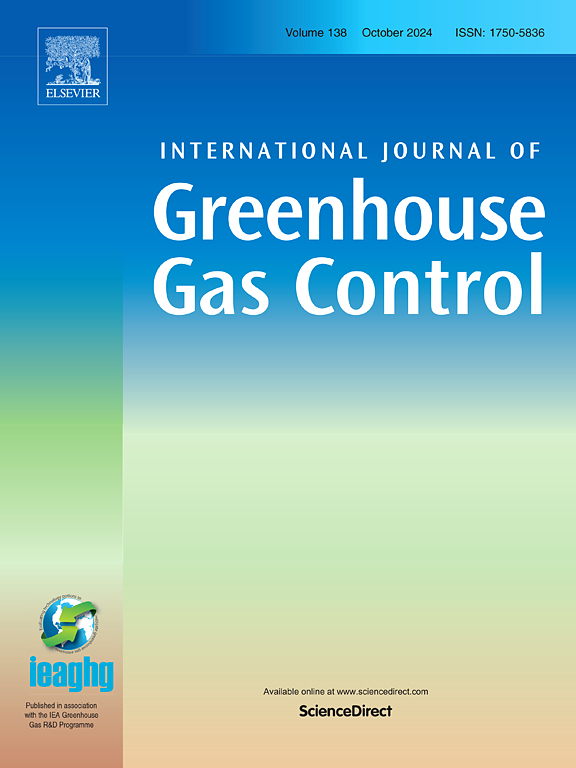A streamlined qualitative risk assessment framework for corrective action in legacy wells: A case study from the lake Pontchartrain basin
IF 5.2
3区 工程技术
Q2 ENERGY & FUELS
International Journal of Greenhouse Gas Control
Pub Date : 2025-08-13
DOI:10.1016/j.ijggc.2025.104451
引用次数: 0
Abstract
Legacy wells, originally drilled for oil and gas extraction, pose significant environmental risks owing to outdated construction standards and inadequate plugging or sealing. With the increasing adoption of Carbon Capture and Storage (CCS), concerns over CO2 leakage through these wells have intensified, thereby necessitating a systematic approach to risk assessment and remediation. This study introduces a streamlined qualitative risk assessment framework designed to evaluate legacy well integrity by analyzing well construction attributes, potential leakage pathways, and associated uncertainties. The framework incorporates probabilistic modeling to quantify risk and generates a risk matrix to guide decision-making for corrective actions. To address remediation prioritization, a phased corrective action strategy is proposed, considering the proximity of legacy wells to an injection site and the projected CO2 plume migration over time. The framework was applied to 28 legacy wells in the Lake Pontchartrain Basin, Louisiana, identifying 23 legacy wells with a significant potential for leakage, requiring remediation considerations. A phased remediation strategy was illustrated using a hypothetical injection well location and plume area modeling to optimize resource allocation. This approach provides a structured decision-making tool for regulators, operators, and policymakers, ensuring effective well integrity management in CCS projects. The streamlined framework is intended to facilitate corrective action assessment while also contributing to the ongoing development of accessible, fit-for-purpose risk assessment tools.
遗留井纠正措施的流线型定性风险评估框架:以Pontchartrain湖盆地为例
由于过时的施工标准和不充分的封堵或密封,传统油井最初是为了石油和天然气开采而钻的,会造成重大的环境风险。随着碳捕集与封存(CCS)技术的日益普及,人们对这些井中二氧化碳泄漏的担忧日益加剧,因此需要一种系统的风险评估和补救方法。该研究引入了一个简化的定性风险评估框架,旨在通过分析井的建造属性、潜在的泄漏路径和相关的不确定性来评估遗留井的完整性。该框架结合了概率建模来量化风险,并生成风险矩阵来指导纠正行动的决策。为了确定修复的优先级,考虑到老井与注入点的距离以及预计的二氧化碳羽流随时间的迁移,提出了一种分阶段的纠正措施策略。该框架应用于路易斯安那州Pontchartrain湖盆地的28口遗留井,确定了23口存在严重泄漏的遗留井,需要采取补救措施。通过假设注入井位置和羽流面积模型,说明了一种分阶段修复策略,以优化资源分配。该方法为监管机构、运营商和决策者提供了结构化的决策工具,确保了CCS项目中有效的油井完整性管理。简化的框架旨在促进纠正行动评估,同时也有助于正在开发的可获取的、适合目的的风险评估工具。
本文章由计算机程序翻译,如有差异,请以英文原文为准。
求助全文
约1分钟内获得全文
求助全文
来源期刊
CiteScore
9.20
自引率
10.30%
发文量
199
审稿时长
4.8 months
期刊介绍:
The International Journal of Greenhouse Gas Control is a peer reviewed journal focusing on scientific and engineering developments in greenhouse gas control through capture and storage at large stationary emitters in the power sector and in other major resource, manufacturing and production industries. The Journal covers all greenhouse gas emissions within the power and industrial sectors, and comprises both technical and non-technical related literature in one volume. Original research, review and comments papers are included.

 求助内容:
求助内容: 应助结果提醒方式:
应助结果提醒方式:


